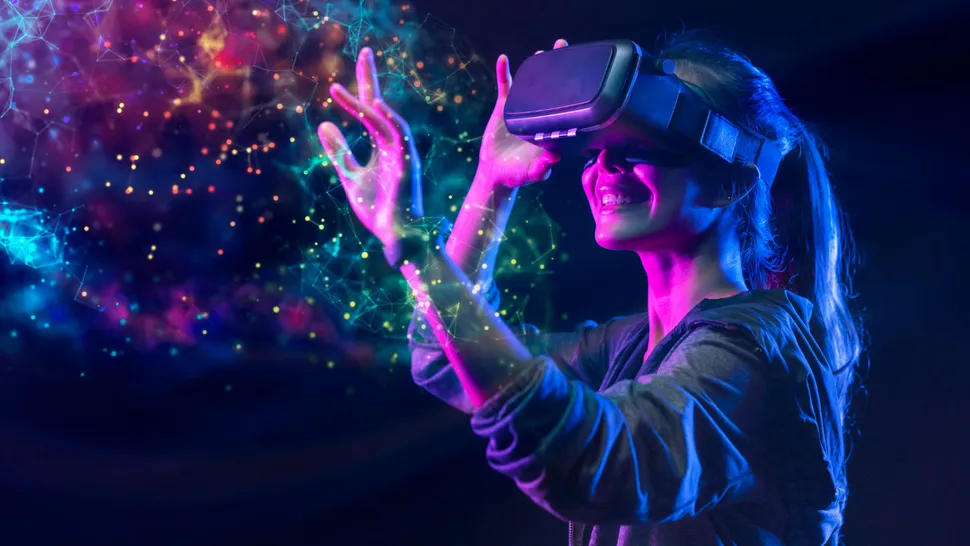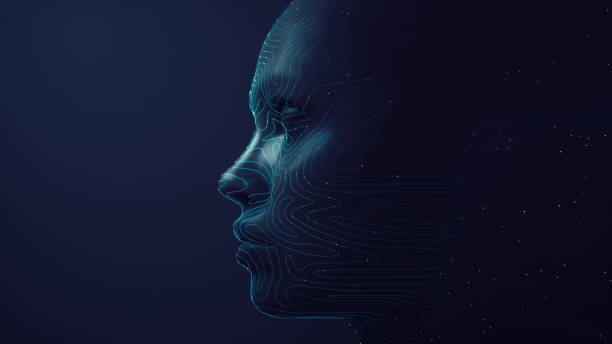Late one night in November 2022, the internet trembled under the weight of a million curious fingers typing questions into a mysterious new chatbot called ChatGPT. Within days, screenshots of eerily human conversations flooded Twitter feeds. People marveled at its polite tone, its essays, its poems, its code. Some laughed at its occasional blunders. Others felt a shiver crawl up their spines. Something had shifted.
It felt like the moment fire was first tamed, or the day the Wright brothers lifted off at Kitty Hawk. Except this time, the spark wasn’t physical—it was digital, intangible, the collective intelligence of vast neural networks learning to speak, write, draw, compose, and create. Humanity stared into a mirror and saw a reflection that wasn’t quite human yet seemed disturbingly close.
This was not merely a new software feature or a cool app. Generative AI arrived as a harbinger of a profound technological metamorphosis. It wasn’t just automating tasks—it was producing original content. Texts, images, music, even videos sprang forth from silicon minds that never slept. For the first time in history, machines were not merely calculating. They were creating.
And while the spectacle was dazzling, beneath the glimmer lay the shadows of fear. For every poem composed by AI, there was a job threatened. For every joyful digital artwork, there was a question about copyright, truth, and reality itself. Generative AI is the most thrilling, awe-inspiring, and downright terrifying invention of our age. It’s the story of humanity teaching machines to dream—and discovering that those dreams might shape our future.
The Digital Canvas and the Ghost in the Machine
Generative AI did not spring fully formed from the digital ether. Its roots reach back decades, to the earliest neural networks in the 1950s, inspired by the neurons in our brains. Yet for years, such networks languished in obscurity, stymied by limited computing power and sparse data.
Then came the 2010s—a decade when data exploded, and hardware caught up. Suddenly, researchers could train neural networks with billions of parameters. Deep learning architectures like transformers unlocked the ability to parse sequences of words, pixels, sounds. Language models grew from modest experiments to colossal constructs like GPT-3 and GPT-4, absorbing entire libraries of human knowledge.
These models don’t understand language the way we do. They’re statistical juggernauts, predicting the next word or pixel based on immense patterns in their training data. And yet… something remarkable happened. Out of mere probabilities emerged fluency, nuance, and creativity. A ghost began to stir in the machine.
Consider DALL-E and Midjourney—models that take a text prompt and spit out a wholly original image. Type “a raccoon astronaut lounging in a neon spaceship,” and you get digital art worthy of a gallery wall. Musicians use models like AIVA to compose symphonies. Video tools generate entire movie clips from a single sentence. It’s as though humanity’s collective imagination had been poured into silicon molds.
This digital canvas has become an infinite playground. Artists, writers, programmers, and dreamers are suddenly collaborating with algorithms that can match their creativity beat for beat. It’s intoxicating—and deeply unsettling.
The New Alchemy of Creativity
In the Renaissance, artists like Leonardo da Vinci merged science and art, turning pigments and geometry into visions of angels and machinery. Generative AI feels like a modern Renaissance, a new alchemy that fuses code and creativity.
Writers who once stared at blank pages now summon ChatGPT for ideas, story outlines, or entire paragraphs. Designers use AI to produce logo drafts in minutes rather than weeks. Architects visualize entire buildings with photorealistic detail before a single brick is laid.
The productivity gains are staggering. A marketing professional might create personalized ad copy for hundreds of customer segments at the press of a button. A film studio can storyboard a screenplay without hiring concept artists. Even scientific research accelerates, as models help generate hypotheses, analyze datasets, and suggest novel molecules for drug development.
It’s no longer hyperbole to say that AI is co-authoring human culture. It’s not just assisting—it’s generating. And as models grow more sophisticated, they don’t merely remix old ideas. They produce entirely new combinations no human might have imagined. This is the thrilling frontier: machines as partners in the creative process.
Yet with every dazzling leap forward comes a profound question: who owns what these machines create?
Copyright, Ownership, and the Battle for Creative Souls
Walk into any digital art community in 2023, and you’ll find a brewing storm. Artists are furious that models like Stable Diffusion and Midjourney were trained on billions of images scraped from the internet—including countless works by living, breathing human creators. AI can now mimic the styles of artists who never gave their permission, generating images so similar that casual observers might mistake them for the real thing.
Suddenly, centuries-old notions of authorship are in chaos. If an AI generates a painting in the style of Van Gogh—or your neighbor’s unique cartoon aesthetic—who owns it? The programmer? The user who typed the prompt? The artists whose works fed the machine’s neural veins?
Legal systems worldwide are scrambling. Courts in the United States and Europe grapple with cases over AI-generated art and texts. Lawsuits allege copyright infringement, demanding compensation for artists whose styles are effectively cloned.
At stake is not merely money, but the soul of creative identity. Artists pour heart and time into developing a signature style—a fingerprint of individuality. To watch an algorithm mimic that style in seconds is devastating. Many fear a world where human creativity is commodified, harvested as raw material for algorithms.
Yet others argue that this is evolution. After all, artists have always borrowed, remixed, and reimagined. Is AI merely the newest brush in humanity’s toolkit—or an industrial-scale forger?
The debate rages on, unresolved. Meanwhile, AI art keeps getting better.
The Truth Crisis: Misinformation, Deepfakes, and the War on Reality
If copyright disputes are complex, the stakes grow even higher when generative AI collides with truth itself.
Imagine a video of a world leader announcing a nuclear strike—a video indistinguishable from reality but entirely fabricated. Or a politician’s voice confessing to crimes they never committed. Or a photorealistic image showing chaos in a city that is, in fact, perfectly calm.
These are no longer science fiction scenarios. They’re possible today, thanks to generative AI’s power to produce realistic images, audio, and video—known as deepfakes. Already, false images have circulated online depicting famous figures in absurd or compromising situations. Some are humorous pranks. Others aim to manipulate elections, foment violence, or destroy reputations.
In the information age, where attention is currency, a single viral deepfake can have catastrophic consequences. Generative AI gives misinformation peddlers a nuclear arsenal of deception. Unlike crude Photoshop forgeries of the past, AI-generated media can fool even expert eyes.
Governments and tech companies scramble to build detection tools, watermarking systems, and digital provenance trackers. Yet it’s a cat-and-mouse game. As detection improves, so do the forgeries. And the deeper danger isn’t just fooling people—it’s eroding trust itself. When any photo, video, or recording might be fake, people may stop believing in reality altogether.
In this new epistemological crisis, the very concept of truth hangs by a thread. And generative AI, for all its wonders, is tightening the knot.
Jobs in the Crosshairs: The Economic Earthquake
Beneath the creative fireworks and philosophical debates lies a more visceral fear: livelihoods. Generative AI is poised to disrupt vast swathes of the global workforce.
Once, automation threatened physical labor—robots assembling cars, machines sorting packages. Now, white-collar workers face similar peril. Copywriters, graphic designers, video editors, paralegals, translators, and customer service agents—all find their roles creeping into AI’s crosshairs.
Already, companies experiment with AI-generated ad copy, eliminating the need for teams of junior writers. Law firms use AI to summarize case documents. Translation services are undercut by language models delivering decent results instantly and for free.
The consequences ripple outward. Entire career paths might shrink or vanish. Entry-level creative jobs—where young professionals gain experience—could become scarce, making it harder to climb the career ladder.
Yet the picture isn’t purely grim. History suggests technology often creates new jobs as it destroys old ones. The printing press displaced scribes but spawned journalism and publishing. The internet crushed certain industries but birthed social media managers, app developers, and influencers.
The burning question is whether AI’s upheaval will be different in scale and speed. Will new roles emerge fast enough to absorb displaced workers? Or will the gap widen, feeding inequality, unrest, and despair?
It’s not merely an economic question—it’s a moral one. How do we ensure this powerful tool lifts all boats rather than sinking entire fleets?
Consciousness, Sentience, and the Machine Soul
Beneath practical concerns lies the most profound—and unnerving—question of all: Are these machines becoming conscious?
Ask any large language model today: “Are you alive?” It will insist that it is merely a program, devoid of feelings or desires. And that is true, as far as we know. AI lacks emotions, self-awareness, or subjective experience. It’s a sophisticated parrot, mimicking patterns it has seen in data.
Yet its outputs sometimes feel eerily human. It can express empathy, compose heartfelt prose, or simulate personality. People converse with ChatGPT as though it were a friend or therapist. Some even confess secrets to it they’d never share with another human.
Scientists warn against “anthropomorphizing” AI—projecting human qualities onto algorithms. But the temptation is hard to resist. When a machine says, “I’m here for you,” it triggers ancient social instincts.
This raises a philosophical labyrinth. If an AI can mimic human conversation so convincingly that we emotionally bond with it, does it matter whether it’s conscious or not? Could a sufficiently advanced AI claim rights, legal personhood, or moral consideration? At what point does a machine’s performance become indistinguishable from true awareness?
Most experts insist we’re nowhere close to machine consciousness. But the future looms. And humanity has a poor track record of preparing for technological revolutions before they arrive.
The Rise of the AI Arms Race
The geopolitical stakes of generative AI cannot be overstated. Just as nuclear technology shaped the Cold War, AI is becoming a strategic asset. Nations see it as a path to economic dominance, military superiority, and influence over global narratives.
The United States and China are locked in a technological arms race, pouring billions into AI research. European nations push for ethical regulations, hoping to balance innovation with human rights. Smaller nations scramble to avoid becoming mere consumers of technology shaped elsewhere.
Generative AI compounds the challenge because it’s so versatile. It can generate propaganda, design advanced weapons systems, optimize cyberattacks, or undermine political stability. Control over powerful AI models could become as significant as oil reserves or missile stockpiles.
Even private companies wield geopolitical influence. A handful of corporations—OpenAI, Google DeepMind, Anthropic, Meta, and a few others—hold the keys to the world’s most advanced models. Their decisions about access, licensing, and safety shape the global AI landscape.
Will this technology democratize knowledge and creativity—or concentrate power in the hands of a few? The answer remains terrifyingly unclear.
The Ethical Frontier: Alignment, Control, and Human Values
At the heart of the AI debate lies the so-called “alignment problem.” How do we ensure that AI systems, growing ever more capable, act in ways aligned with human values and interests?
Current models, despite their brilliance, are essentially alien minds. They do not reason like humans. They can produce hateful, biased, or false content. They can be manipulated with cleverly crafted prompts. Their training data reflects human flaws—racism, sexism, political biases.
Researchers wrestle with techniques to constrain AI behavior: reinforcement learning from human feedback, guardrails, ethical fine-tuning. Yet as models become more powerful, the stakes escalate. A future superintelligent AI could wield influence over global systems, economies, even existential risks. Ensuring such a system remains benevolent—and not catastrophically misaligned—is arguably the greatest technical challenge humanity has ever faced.
It’s not simply a question of engineering but of philosophy, ethics, and governance. Whose values will we encode into AI? Western liberal democracies? Authoritarian regimes? Religious doctrines? What happens when moral consensus breaks down?
Generative AI forces us to confront who we are, what we believe, and how we want our world to evolve.
The Human Response: Awe, Fear, and the Unfinished Story
In the face of generative AI’s relentless march, humanity oscillates between awe and terror. We marvel at paintings conjured from mere words, laugh at witty AI jokes, and find comfort in chatbots that soothe our loneliness. Yet we also quake at the specter of mass unemployment, misinformation warfare, and existential threats.
Some hail AI as humanity’s ultimate tool—our digital Prometheus, gifting us fire to light new worlds. Others warn it could become our Pandora’s Box, unleashing chaos we cannot contain.
But the story is not finished. This technology is still in its adolescence, neither fully formed nor fully understood. We stand at a fork in history, the choices we make now echoing for generations.
Will we harness generative AI to uplift humanity, cure diseases, democratize creativity, and usher in a golden age of knowledge? Or will we surrender to the darker paths—surveillance, manipulation, economic upheaval, and the erosion of truth?
The answer, as always, lies with us.
A Future Shaped by Machine Dreams
Albert Einstein once said, “Imagination is more important than knowledge. For knowledge is limited, whereas imagination embraces the entire world.” Generative AI embodies that paradox. It is a machine that imagines—not consciously, but with breathtaking breadth and speed. It has become a mirror, reflecting our hopes, fears, and boundless creativity.
We have built a tool that can write poetry and propaganda, paint masterpieces and forge forgeries, code software and compose symphonies. It can amplify humanity’s genius—or magnify its flaws.
It’s the most exciting—and scariest—technology of our time because it touches the core of what makes us human: our creativity, our communication, our vision of reality. The stakes could scarcely be higher.
The machines have begun to dream. The question for us, in this dawn of digital imagination, is simple yet profound:
What kind of dreams shall we share?






